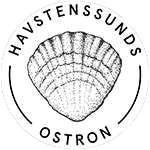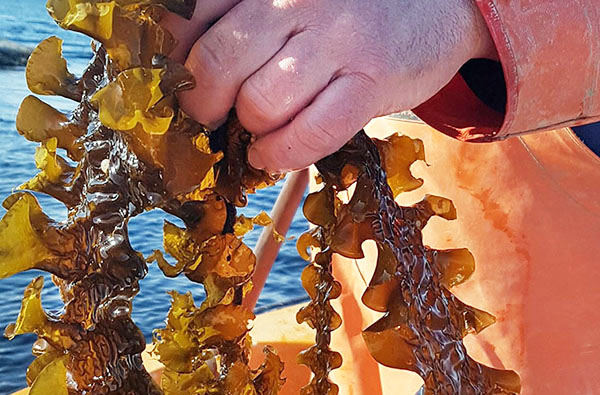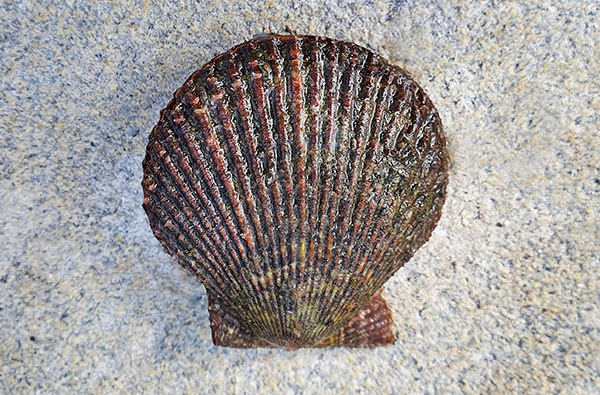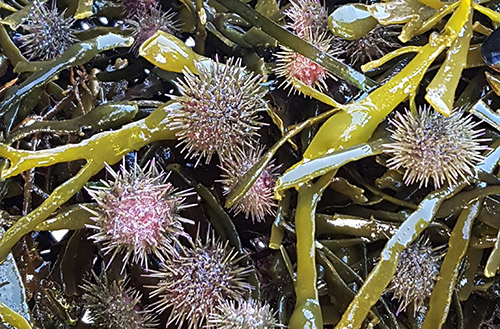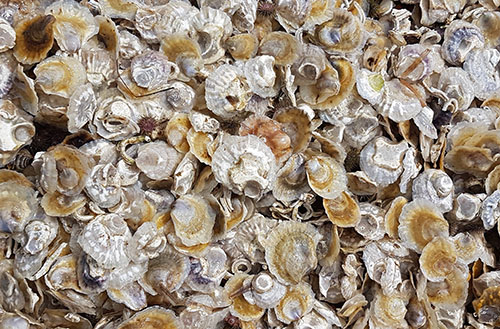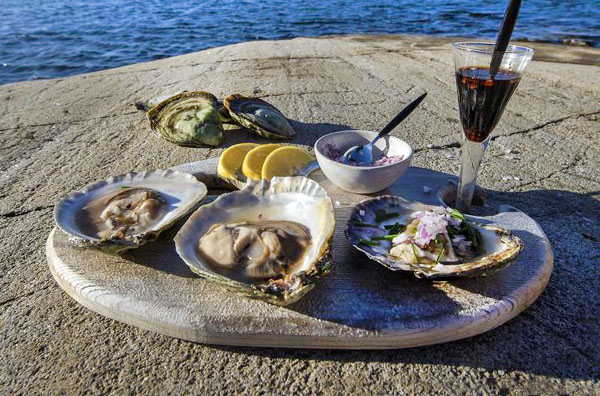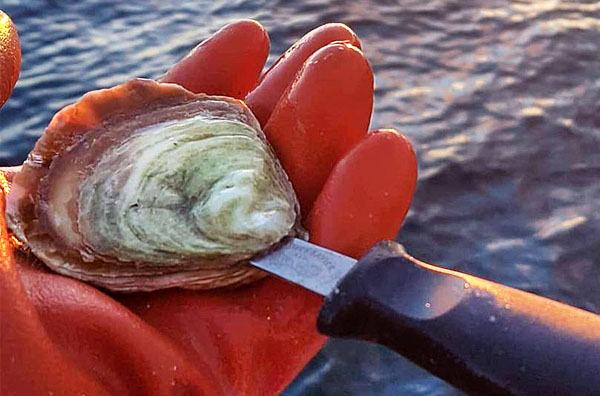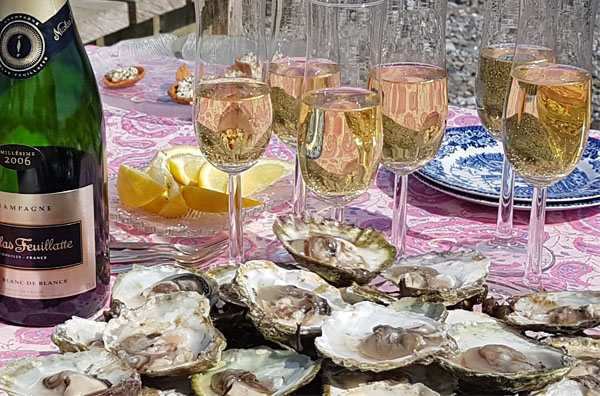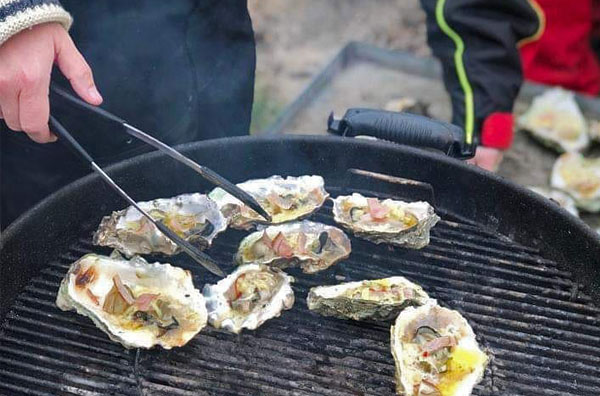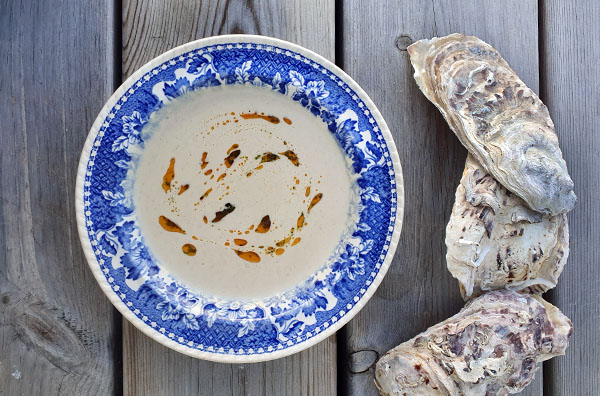SHOP
We sell our oysters to wholesalers, fishmongers and restaurants all over Sweden. At better restaurants you can find our oysters on the menu, at fishmongers you can keep an eye out our labelled packages. You can also buy oysters directly from us in Havstenssund. Contact us for more information. All oysters are washed thoroughly before delivery and packed with seaweed in the baskets, minimum 6 pcs per basket.

SIZES & DESCRIPTIONS
NB: We use our own sizing, which should not be confused with French sizing.
Swedish farmed flat oysters ”Ostrea edulis”
Our primary product is our native Swedish oysters which are farmed near Havstenssund in northern Bohuslän. The system with floating baskets means that the oysters are constantly kept in motion and stay where there is most food (plankton) and fresh water. This is reflected in the fact that the oyster is well fed and has a beautiful shape, which is well suited as a cocktail oyster. Both spat collection and further breeding take place completely naturally in the sea without the need to add anything. In comparison with wild oysters, the shell weight is lower in relation to meat weight and the oysters generally have a more even quality. The oysters are sorted in sizes, thinned out and cleaned regularly. This removes harmful organisms from the baskets and promotes the growth of the oyster. We deliver farmed oysters from September to May.
- Size: 0: (ca 110 -160 g)
- Size: 1: (ca 70 -100 g) Premium Cocktail
- Size: 2: (ca 45 – 70 g) Small Cocktail
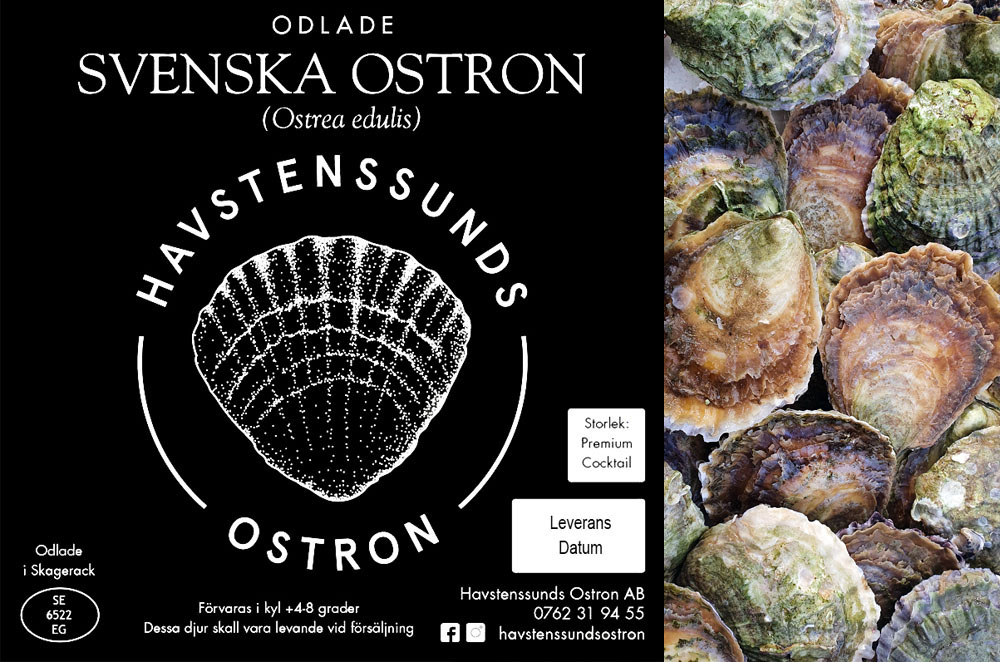
Swedish wild oysters “ Ostrea edulis”
We complement our range with wild flat oysters. Wild oysters often have a more varied color and shape compared to farmed oyster. This is due to different living conditions, such as bottoms and depths. The shell weight is usually higher on wild oysters.
- Size: 0 (110 – 160g)
- Size: 1 (ca 80 – 110g)
- Size: 2 (ca 50 – 80g)

Wild Pacific Oysters ”Crassostrea gigas”
Pacific oysters are another wild species that arrived in Sweden in 2006. In Sweden these oysters are known as “Japanese Giant Oyster”. It is the same species that are imported in large quantities as farmed oysters, especially from France. In Scandinavian waters these oysters get a more complex taste due to the cold, clean and algae-rich waters. Pacific oysters are used as a trade name in the rest of the world, and we have been approved by the National Food Administration to use this name here as well. These oysters are also known by their latin name “gigas”, or are referred to as “cupped” oysters. The most common size we sell are small cocktail sized oysters, so the name “Japanese Giant Oysters” is misleading. We freedive to forage for Pacific oysters or use a specially made rake. Once harvested and cleaned, we sort the Pacific oysters in four sizes. One form of fast food that we have introduced is barbecue oysters (size 1). When ordering a minimum of 8 oysters, a recipe is included.
NOTE: The shells and liquid on Pacific wild oysters weigh significantly more than on farmed flat oysters and the weight is approximate.
- Size: 0-00 (300 – 600g) Cooking oysters, works well in soup
- Size: 1 (ca 150 – 270g) Perfect as grilled or oven baked
- Size: 2 (85 – 140g) Cocktail size
- Size: 3 (60 – 80g ) Cocktail size
- Size: 4: (40 – 60g) Cocktail size

Quality
 Havstenssunds Ostron is approved by the National Food Administration to farm, harvest and sell oysters. The quality of fresh oysters must be tested regularly in order to be approved for distribution. The control means that the oysters and the water they live in are examined for bacteria and algae toxins. The waters where oysters are farmed or wild harvested are called catchment areas. Weekly we submit oyster samples to the National Food Administration. If the EU regulated environmental or health indicators are exceeded in a catchment area, it will be closed for harvest until the levels have fallen. The packaging in which approved oysters are sold must be clearly marked and state which catchment area and operation the oysters come from.
Havstenssunds Ostron is approved by the National Food Administration to farm, harvest and sell oysters. The quality of fresh oysters must be tested regularly in order to be approved for distribution. The control means that the oysters and the water they live in are examined for bacteria and algae toxins. The waters where oysters are farmed or wild harvested are called catchment areas. Weekly we submit oyster samples to the National Food Administration. If the EU regulated environmental or health indicators are exceeded in a catchment area, it will be closed for harvest until the levels have fallen. The packaging in which approved oysters are sold must be clearly marked and state which catchment area and operation the oysters come from.
All our oysters, both wild and farmed, are washed and scrubbed thoroughly before delivery. The last weeks at the farm they are placed in special baskets in the water’s surface to be cleansed by fresh and free flowing water.
The Duke of Lindöfjord

The Duke of Lindöfjord is a tribute to the long history of oyster trade in Havstenssund. The Duke was pictured on the label of canned seafood produced by Havsten Canning, a company that specialized in canned fine seafood such as shrimp, mussels and oysters. The company was started by Gösta Hanson, Anders Karlsson and Oskar Persson from Hogdal, a small village near the Norwegian border. After having worked in the seafood industry for years they decided to start their own canning factory in Havstenssund. During the first year the company was called Neptuns Canning Factory, but in 1948 the name was changed to Havsten Canning Ltd. Anders Karlsson was the grandfather of Mathias and during an attic cleaning Mathias found a box of old labels for canned oysters. Maybe it was then the idea was born of once again putting Havstenssund on the map as a center for oyster production and export. In 1974 the canning of seafood ceased. Today the old canning factory is the headquarter of GBM Marin which is still owned and operated by the family of Gösta Hanson.
After 50 years hidden away in a dusty attic the Duke is now making a comeback as the patron saint of Havstenssunds Ostron. From time to time he appears on social media with an old anecdote from his travels as an oyster trader.
PRODUCTS UNDER DEVELOPMENT
Our passion for aquaculture and sustainable seafood means that we are constantly experimenting with new products. At the moment there is a huge appetite for new ingredients from Swedish restaurants and we are collaborating with several chefs who are testing our ideas and advise us on what type of ingredients are coming up on the international gourmet scene. Here are some products and niche markets that we are working on at the moment:
PRODUCTS UNDER DEVELOPMENT
Our passion for aquaculture and sustainable seafood means that we are constantly experimenting with new products. At the moment there is a huge appetite for new ingredients from Swedish restaurants and we are collaborating with several chefs who are testing our ideas and advise us on what type of ingredients are coming up on the international gourmet scene. Here are some products and niche markets that we are working on at the moment:
